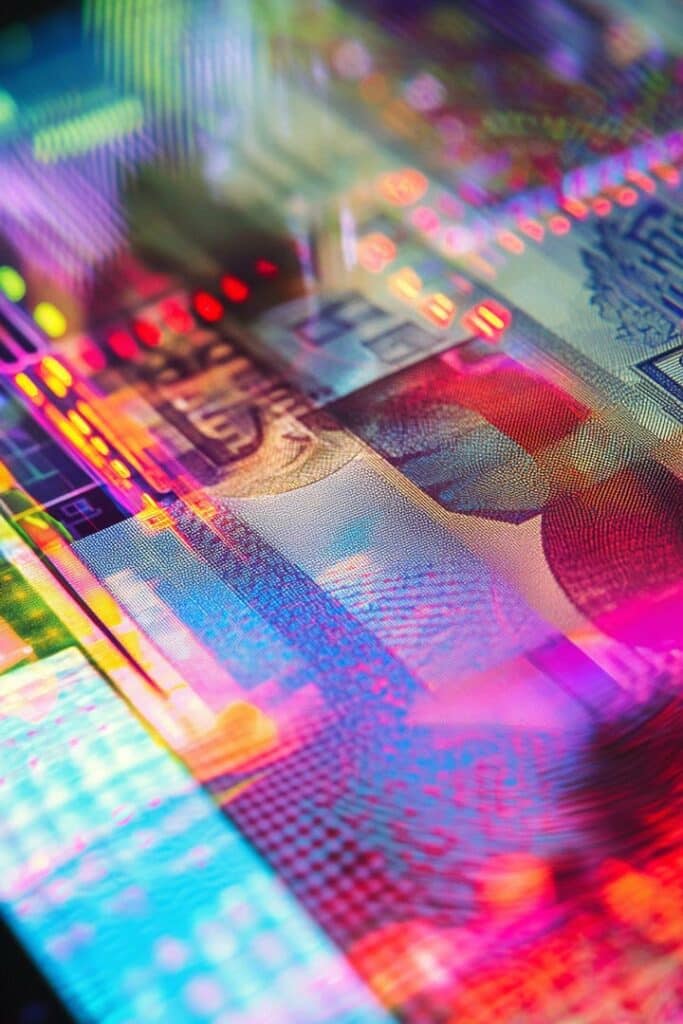Introduction
Europium: The Brilliant Element Behind Luminescent Technology
Europium, a soft, silvery metal, is renowned for its luminescent properties, making it indispensable in display technology, safety applications, and anti-counterfeiting measures. Known for producing red and blue phosphors, Europium’s unique characteristics have revolutionized how we see color in digital displays and have enhanced the security of currency and documents. With a critical role in modern screens, from smartphones to televisions, Europium has become essential in various technologies, bridging the gap between utility and visual brilliance. Its rare and reactive nature makes it one of the more challenging rare earth elements to work with, adding to its value and significance.
History/Discovery
The Discovery of Europium: Lighting Up Science and Technology
Europium was discovered in 1896 by French chemist Eugène-Anatole Demarçay, who noticed the new element’s unique spectroscopic lines while studying rare earth minerals. Named after the continent of Europe, Europium was initially of scientific interest but later found real-world applications in the 20th century when color television technology evolved. Its phosphorescent properties, which produce vibrant reds and blues, made it ideal for screen displays. Over time, Europium’s applications expanded, and today, it serves in everything from secure printing for currency to radiation detection in nuclear facilities, highlighting its broad and versatile impact.
Characteristics
Europium’s Physical and Chemical Properties: Stability with a Glow
Europium is a soft, ductile, and highly reactive metal, which tarnishes easily in air and reacts vigorously with water. As one of the most reactive rare earth elements, Europium requires careful handling and is typically stored in an inert atmosphere to prevent oxidation. Its standout property is its ability to emit brilliant red and blue hues when used in phosphorescent compounds, making it ideal for display technologies. Additionally, Europium’s neutron absorption capacity contributes to its utility in nuclear reactors, where it plays a role in controlling and moderating reactions, demonstrating its versatility beyond luminescence.

Popular Applications
Bringing Light and Security: Europium’s Diverse Applications
Europium’s phosphorescent properties make it a cornerstone of modern display technology, particularly in creating the vibrant reds seen in television and smartphone screens. In the security sector, Europium’s luminescent qualities are used in anti-counterfeiting applications, such as the marking of banknotes, where it provides an added layer of protection. Europium is also used in radiation detection as its compounds can fluoresce under certain types of exposure, making it invaluable in nuclear facilities and radiology. These applications reflect Europium’s importance in fields ranging from consumer electronics to public safety.
List of Popular Applications
- Display Screens: Europium-doped phosphors create vivid reds in LED and LCD screens, enhancing color accuracy in TVs, smartphones, and monitors.
- Anti-Counterfeiting: Europium’s unique glow is used in security printing on banknotes and passports, aiding in fraud prevention.
- Nuclear Reactors: Europium’s neutron absorption makes it valuable in controlling nuclear reactions and improving safety.
- Radiation Detection: Europium compounds fluoresce under radiation, making them useful in detectors and radiology applications.
Where You Find Europium in the World
Global Reserves and Sources of Europium
Europium is typically sourced from rare earth minerals such as monazite and bastnäsite, where it exists alongside other rare earth elements. The majority of Europium production occurs in China, the world’s largest supplier, with additional deposits located in countries like the United States, India, and Brazil. Europium is more challenging to extract than some of its counterparts due to its reactive nature, and its extraction can involve complex environmental considerations. As global demand increases for displays, security features, and nuclear technology, securing a sustainable Europium supply is critical for future applications.
The Future of Europium
Europium’s Expanding Role in Technology and Security
With ongoing advancements in display technology and digital security, the demand for Europium is expected to grow. Its role in producing vibrant colors for modern screens makes it essential in the electronics industry, particularly as high-definition and OLED displays become more popular. The anti-counterfeiting applications of Europium in secure printing will likely remain vital as governments and corporations continue to prioritize fraud prevention. Additionally, as research into radiation detection and nuclear safety evolves, Europium’s value in these fields could see expansion. Sustainable sourcing and recycling efforts are becoming increasingly important to maintain a steady Europium supply for the future.

